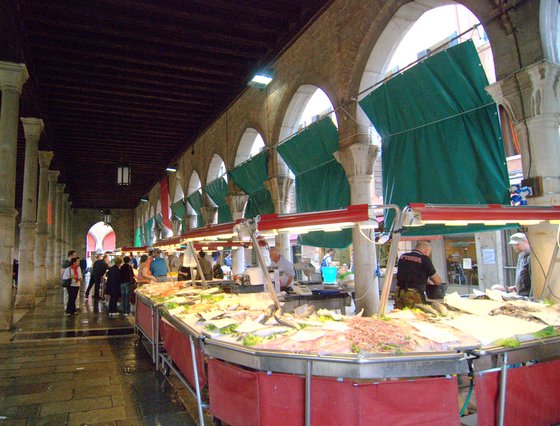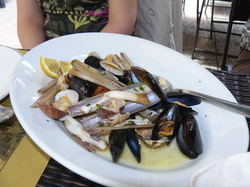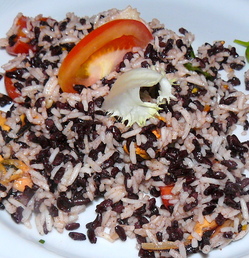 |
| Venetians shopping at the city's main fish market |
Along the Mediterranean coast of France, boats set out nightly to catch rockfish and eels for the local bouillabaisse, while oysters grow on the rocky reefs west of Marseille. Along the coast of Sicily, they go for prize swordfish, bluefin tuna, grouper, anglerfish, mullet, and sardines. Octopus and cuttlefish are everywhere. And in the northern Adriatic, where the Mediterranean dead-ends between the east coast of Italy and the west coast of Slovenia and Croatia, there's a thriving business cultivating shellfish (mussels, clams, oysters, scallops), especially in the shallow lagoons between Venice and Trieste.
Aurelio Zentilin.JPGWith a PhD in marine biology, Trieste-based Aurelio Zentilin runs the marketing arm of a thriving shellfish cooperative and writes an entertaining blog about mollusks. Fluent in Italian and French, he also hosts a YouTube series titled "Mollusk TV" that provides down-to-earth advice on selecting and cooking shellfish. Restaurant professionals regularly invite him to their gatherings, where he willingly shares his expertise and his recipes.
So let's start, as does Zentilin, at the retail fish markets of the Adriatic. The most active is in Venice: The Pescharia (officially known as il Mercato del Pesce al Minuto) on the Grand Canal, which has sheltered dozens of fishmongers in a red brick hangar alongside the Rialto bridge for centuries. If you find tourists here, they're snapping pictures of Venetians buying dinner. Caught in the surrounding waters: Squid, sardines, sea snails, and those shrimp-like creatures called canoce that Cornichon wrote about earlier in the year.
 |
| Razor clams at 40 Ladroni |
Pay no heed to the tourist comments on TripAdvisor and similar sites. They'll never be happy unless it's cheap and deep-fried; the worthwhile comments are in Italian ("A chi piace il pesce e la cucina casalinga questo è un posto assolutamente da provare, noi non vediamo l'ora di ritornare!" which translates to, "If you like home cooking this is a spot you must try; we can't wait to return.") Shrimp with polenta, a perfect scallop in its shell, calamari, a sublime cod fritter, the sweetest razor clams imaginable. Not a tourist trap, for sure.
 |
| Risotto with Mussels at Terra & Laguna |
The Adriatic, by the way, is the same temperature as Puget Sound, and a single mature mussel, Zentilin reminds me, filters 21 liters of 14-degree water a day -- over five gallons. Farmed shellfish, he's convinced, are the key to healthy waters, since they eat the same thing as shellfish in the wild. Compare that to farmed fin-fish, whose feed has to be imported, and whose waste has to be disposed of. And Zentilin's shellfish cooperative has the full support of the local government.
"There's a mutually beneficial relationship here between our shellfish industry and tourism," he says. Not American tourists, necessarily, but Germans above all. It's just a 300-mile hop across the Alps from Munich to the warm-water playground of the Adriatic, and Germans love mollusks.
Osteria Ai 40 Ladroni, Cannaregio 3253 (Fondamenta della Sensa), Venice, Italy (39) 041 715736
Terra e Laguna, via Minut 1, Aquileia, Italy (39) 0431 919444

No comments:
Post a Comment